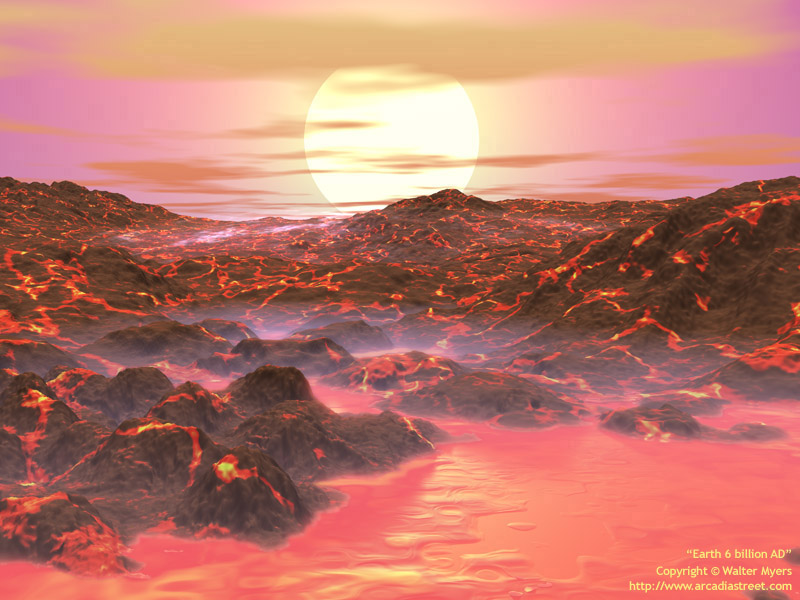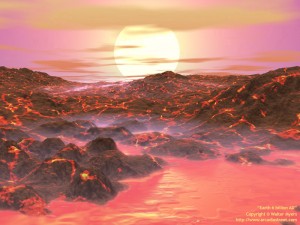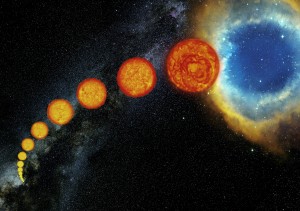September 20, 2013 – The Doomsday Clock has been used in the past to tell us how close we were to total nuclear holocaust during the Cold War. But now we can set it to a new and distant point in time, between 1.75 and 3.25 billion years in the future. Because that is when our planet will no longer be able to support life.
At least that is the estimate of a group of scientists who have written an article appearing in the journal Astrobiology. In it the researchers have provided we earthlings with their prognostications and estimates of our planet’s habitability based on observations of exoplanets (planets circling other stars).
For more than two decades scientists have been discovering thousands of exoplanets and among them they have found some Earth-like ones. Among these they have been seeking ones that orbit around their stars in what is referred to as the Goldilocks Zone (not too hot, not too cold, just right), were water resides in liquid form on the surface. They have used observations of these stellar systems to develop models that give them an estimate of the habitable lifetime of such planets.
Life emerged here on Earth about 700 million years after the planet first formed. That was about 4 billion years ago. It largely consisted of single-celled creatures. Multi-cellular and complex life emerged much later, somewhere between 1 billion and 500 million years ago. Since then animals and plants have taken on all kinds of complexity in filling every ecological niche on the planet from deep within the crust to the edge of space. But all of that life is very much bound to the constraints set by our Sun’s size, distance and energy output.
What happens when the Sun ages based on stellar evolutionary models? Well it is not going to happen in the near future but from observations it is clear that at some point as the Sun consumes much of its hydrogen it will begin to swell and eventually evolve into a Red Giant (see image at the bottom of this posting). More than likely Earth will look a lot like the picture immediately below, entitled Earth 6 Billion A.D., when that comes to pass, uninhabitable by life as we know it, as our star boils the oceans and sears the continents.
Of course we can make things a lot more uncomfortable in the near future by adding to the greenhouse effect our atmosphere provides by continuing to pump out CO2 the way we are currently doing. But that’s a different type of planetary evolution and one that we can control collectively.
So don’t set your watch to 1.75 billion years in the future. Instead lets hunker down and work on fixing the planet right now.


















